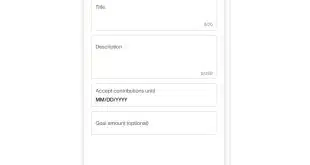Much is being made of the potential in the interface between the Internet of Things and payments. Everything, from a thermostat that pays your heating bill to a refrigerator that orders what you are about to run out of and pays for it, has been talked about.
But the sleeper new payment device may be the automobile.
Today’s cars come pre-wired to stay in touch with other businesses. Your car is periodically reporting its location so it’s ready when you launch the onboard map app. It is probably reporting its mechanical status to its manufacturer. If needed, it will even summon emergency services to your location.
Some insurance companies will equip your car with a device that informs them of your driving habits. Next could be decrementing a higher or lower monthly premium from your bank account accordingly. BMW even puts an NFC credit card in the key fob.
Tesla has gone a step farther and installs new features and functions over the Web while the owner is recharging the car. The goal is to eliminate models becoming obsolete, a real disruptor of the present planned-obsolescence business model used to entice people to buy a new car long before the old one falls apart.
One wonders if this new business model is also built on the notion of eventually automatically charging for the updates at rates that mimic the premium charged for a new car over an older one of the same make and model. Try comparing what your car is worth versus a new one of the same make and model and you can get a sense of the price points that over-the-air updates could automatically debit your bank account for.
Many of us already pay via our car whenever we drive on a toll road or bridge, using a transponder that is linked to a bank account or credit card. In some cities you can pay for your parking this way. In the future, parking garages will indicate on the car’s in-dashboard display where there are available open parking spaces—and maybe even charge extra for the choicer ones. Once transponders are built in at the factory, and a single transponder will work on all toll roads and at every garage, it is a small step to where your car pays for the food you order at a drive-through restaurant with a payment system that is indifferent to the brand of the restaurant.
Why is this happening with our cars much more quickly than with our houses? Part of the reason is that cars tend to become engaged in payable situations more than houses do. Other than utility bills, it is difficult to imagine payments scenarios for the house that are both useful and do-able. The self-restocking refrigerator would cost a good deal more than the value it might seem to offer. (Unless, of course, you really, really hate shopping for groceries.) Cars, however, are constantly encountering payable moments simply because we, their drivers, use them in situations where payments are required.
As usual with surprising new things, there is an industry with an incentive to see more and more of this happening. It is the folks like Harman, Denso, and Garmin, the people who build the infotainment systems for almost every brand of car sold anywhere in the world. The more functionality that can be added to the infotainment system, the more customer demand there will be for these systems, whose screens seem to occupy more and more of the dashboard with each new model year. Building payment capability into these systems is already becoming a locus of competition in the industry.
Is a general principle illustrated here? Perhaps it is this: Those banks, card companies, and payments startups that want to profit from the Internet of Things should manage their product-development efforts, not to blindly integrate payments into every new “thing,” but to first ascertain which things most people will be using when they encounter situations where a payment is required. Along with the wrist device, the car stands to be the most likely candidate.
Given that many automobile manufacturers already own captive finance companies, banks will have to move fast to avoid seeing yet another payments opportunity slip from their grasp. Maybe it is not really that surprising that Tesla’s founder got his start helping to launch PayPal.
—George Warfel • george.warfel@edgardunn.com





